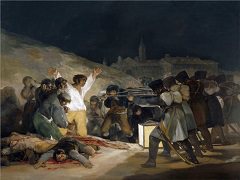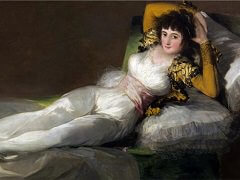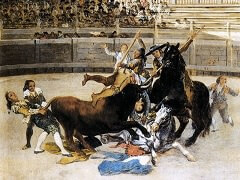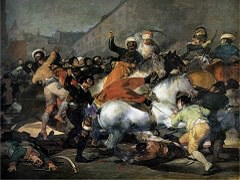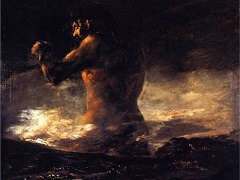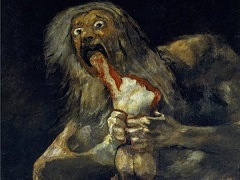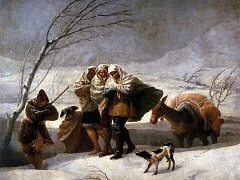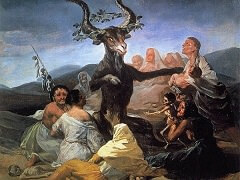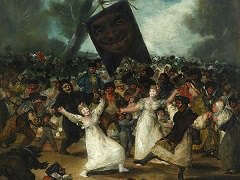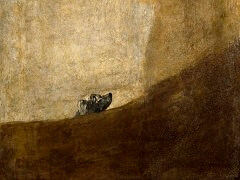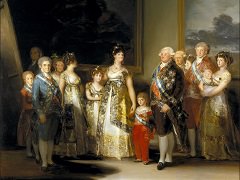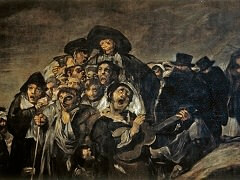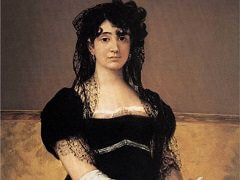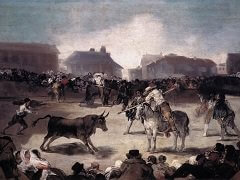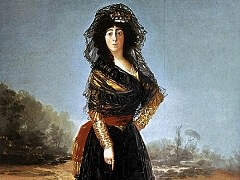The Yard of a Madhouse, 1794 by Francisco Goya
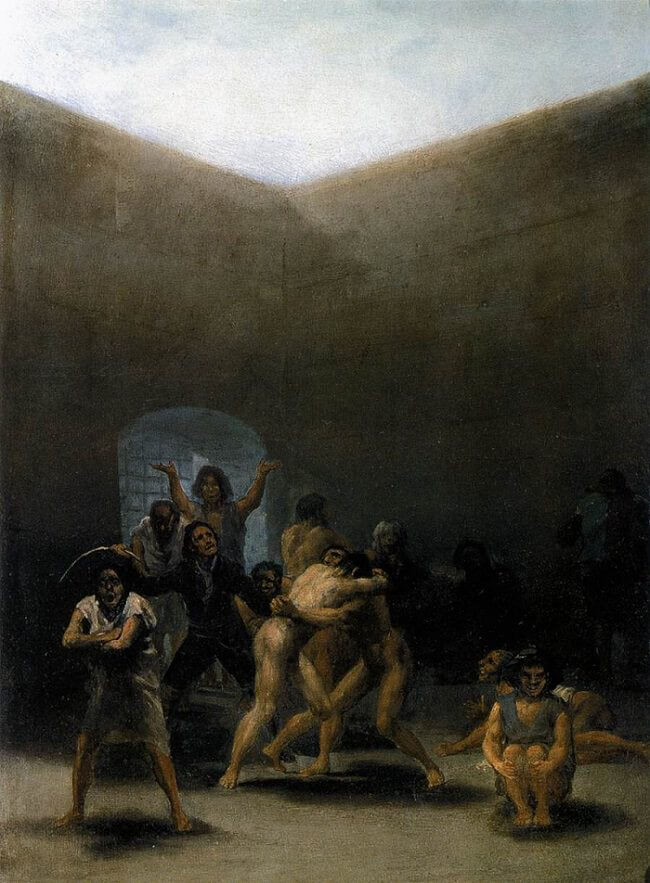
While he was recovering from the serious illness that left him totally deaf, Goya occupied himself with a series of 'cabinet' paintings which he sent to the Academy and which won approval as scenes of'national pastimes'. A few days later, he followed these with a twelfth painting of a very different character, which he described in detail in a letter to the Director. It was a scene, he wrote, that he witnessed in Saragossa: 'the yard of a madhouse and two naked madmen fighting, with the man in charge beating them, and the others wearing sacks [or straitjackets]'. There was no need to worry about placing it quickly, he added, as 'I am aware of the difficulties of the subject'.
The rediscovery of this picture in 1967 (Desparmet-FitzGerald) provided a touchstone for the identification of the rest of the set of cabinet pictures that Goya had sent to the Academy which are now considered to include subjects such as a Shipwreck and a Fire - hardly to be described as national pastimes - as well as Strolling Players, and possibly a group of Bullfight scenes. The Madhouse and other small paintings now in the Academy, once thought to have been among the scenes of so-called national pastimes are now generally attributed to a considerably later date, for stylistic reasons. The Yard of a Madhouse is one of many scenes Goya recorded that he had actually witnessed, among them some of the war scenes in the Desastres (with the titles 'I saw this' and 'this too'). Many of his etchings and drawings testify to his concern for the plight of lunatics and prisoners throughout his life.

